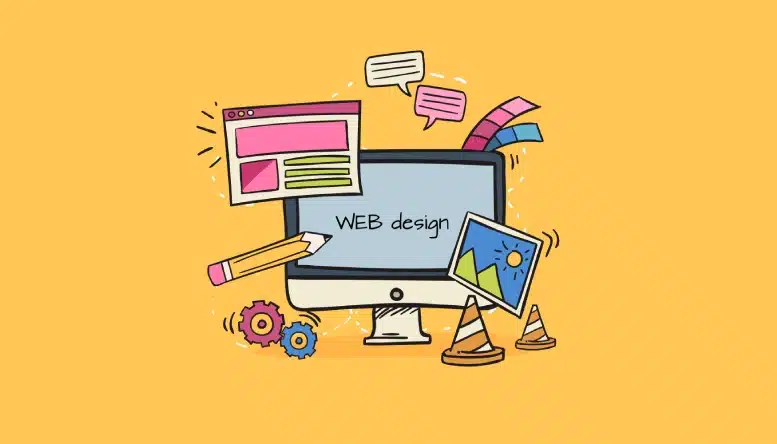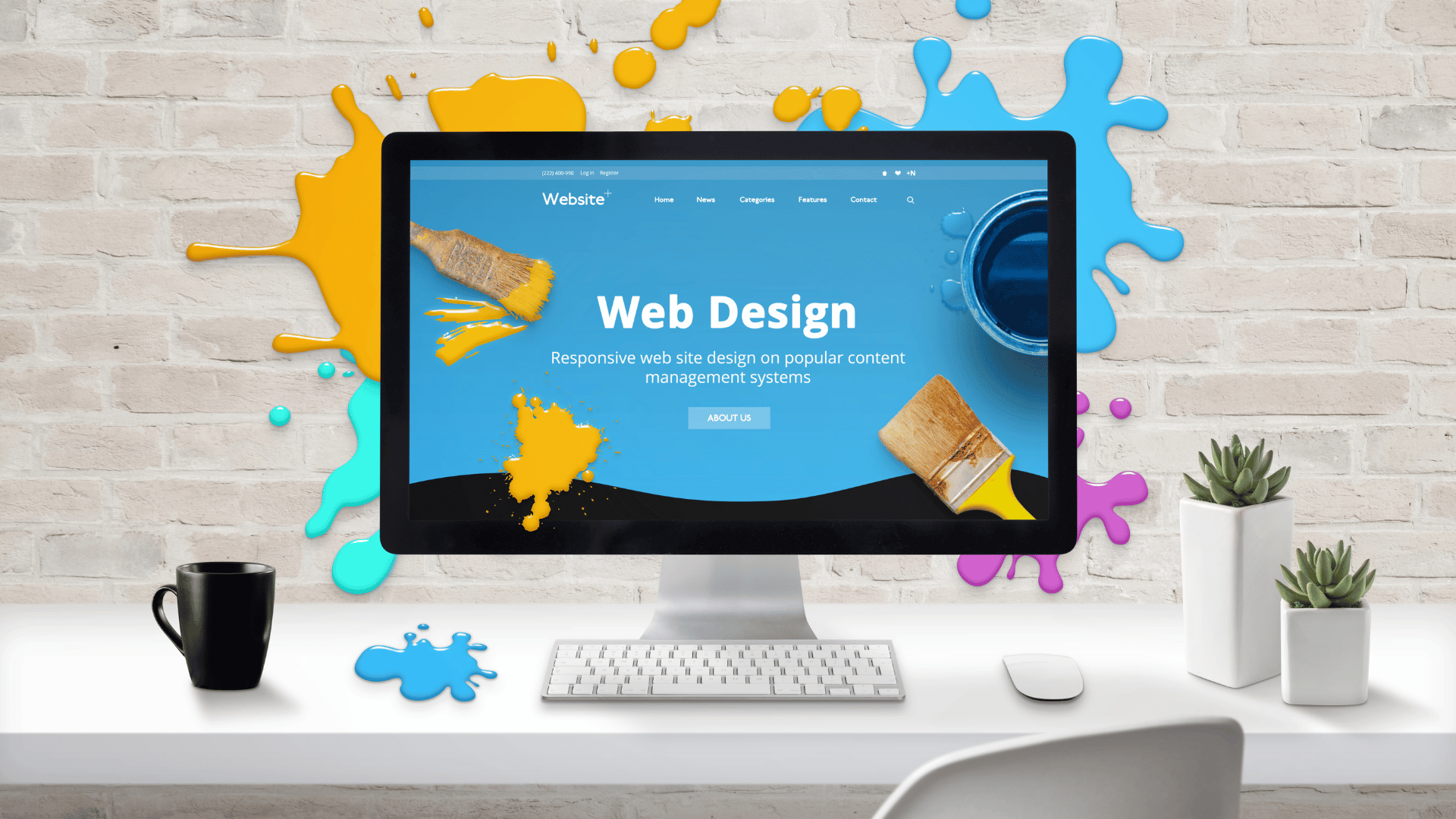Vital Tips for Enhancing Your Online Visibility Through Web Design
In today's digital landscape, web design plays a necessary duty in shaping an on the internet visibility. A well-structured site can significantly boost user engagement and brand identification. Crucial element such as user experience, mobile optimization, and load speed are crucial factors to consider. Recognizing these parts can make a substantial distinction. What specific approaches can be utilized to efficiently execute these style principles? Checking out these aspects will certainly expose extra concerning boosting on the internet presence.
Focus On User Experience (UX)
When designing a website, focusing on user experience (UX) is vital for guaranteeing that site visitors can browse the website effectively and involve with its content. A well-structured design helps individuals discover information swiftly, minimizing stress and enhancing the possibility of return visits. Key components such as instinctive navigating, clear phone call to action, and visually attractive design contribute considerably to a favorable UX.
In addition, uniformity in style elements, including color pattern and typography, promotes familiarity and count on. Focus to load times is additionally essential; fast-loading web pages keep customers, while hold-ups can bring about high bounce rates. Integrating feedback devices, such as studies or get in touch with forms, enables companies to recognize user demands and enhance as necessary. Inevitably, a focus on UX not just boosts site visitor satisfaction but likewise sustains the general goals of the internet site, driving conversions and developing a faithful target market.
Maximize for Mobile Tools
In today's digital landscape, enhancing for mobile phones is important for reliable web design. This involves implementing responsive layout, making certain quickly filling times, and incorporating touchscreen navigating functions. These components collectively boost user involvement and fulfillment on mobile systems.
Receptive Style Value
Responsive design stands as a foundation of modern web development, making certain that sites operate flawlessly throughout numerous devices, particularly mobile phones. As mobile phone usage continues to rise, users expect a constant experience no matter of screen dimension. A receptive design adapts the layout, pictures, and performances to different devices, boosting usability and engagement. This adaptability is crucial, as it enables businesses to reach wider target markets without the need for separate mobile websites. Furthermore, online search engine favor receptive web sites in their positions, making it crucial for presence in a congested digital landscape. Eventually, buying receptive style is not simply concerning aesthetic appeals; it is a critical strategy that improves user experience and drives possible conversions.
Rapid Loading Times
Rapid packing times are essential for optimizing mobile devices, as users increasingly expect instantaneous accessibility to information - Web Design Agency. A site that lots swiftly boosts user fulfillment and lowers bounce prices. Mobile users commonly access sites on-the-go, where slow filling can cause stress and abandonment. To attain fast filling times, web developers need to focus on image optimization, minimize HTTP demands, and make use of caching techniques. In addition, using material delivery networks (CDNs) can even more improve lots speed by dispersing content closer to users. Simplifying the internet site's code and leveraging asynchronous packing for scripts can likewise contribute to better efficiency. Ultimately, a fast-loading internet site not just supports user involvement yet also positively impacts online search engine positions, making it a vital element of reliable web design
Touchscreen Navigating Includes
A seamless user experience on smart phones greatly relies on efficient touchscreen navigating functions. Developers have to prioritize instinctive layouts that suit gestures such as touching, swiping, and pinching. Huge, easily tappable buttons lower user disappointment and improve capability, permitting smoother communications. On top of that, integrating visual responses, such as highlighting buttons when pushed, can significantly enhance user involvement.
Applying a regular navigating framework across pages aids in user orientation, making it less complicated for visitors to find details. Receptive style warranties that components resize appropriately for various display dimensions, keeping functionality. Lastly, reducing the requirement for scrolling and supplying quick access to crucial attributes will aid users browse successfully, eventually fostering a favorable online experience.
Focus on Lots Rate
While site visual appeals and performance are very important, focusing on lots rate is essential for retaining site visitors and enhancing general user experience. Study suggests that customers expect websites to fill in under 3 secs; anything longer can result in increased bounce rates. A slow-loading site irritates customers and decreases the chance of keeping their rate of interest.
To boost tons rate, internet designers need to maximize image sizes, reduce HTTP requests, and take This Site advantage of web browser caching. Additionally, using content shipment networks (CDNs) can disperse web content extra efficiently throughout various places, bring about faster gain access to times.
Removing unneeded plugins and manuscripts can reduce tons times substantially. Consistently evaluating site speed using tools like Google PageSpeed Insights aids identify locations for improvement. By concentrating on load rate, services can create a much more smooth searching experience, inevitably motivating user engagement and boosting conversion prices. Speed is not just a technological facet; it's a vital component of user complete satisfaction.
Execute Clear Navigating
Efficient navigation serves as the backbone of an easy to use web site, leading site visitors perfectly through its material. A well-structured navigating system assures that users can easily find the information they seek, improving their overall experience. It is necessary to focus on simplicity; menus ought to be straightforward, with clear tags that properly represent the corresponding web pages.
Organizing content into rational groups can also assist in quicker gain access to, aiding customers browse without feeling bewildered. Executing breadcrumb tracks permits site visitors to track their trip with the website, giving context and enabling very easy backtracking.

Utilize Involving Visuals
Including interesting visuals can considerably boost a website's appeal and performance, as they capture user focus and communicate details much more dynamically than text alone. High-grade pictures, video clips, and infographics can create an unforgettable user experience, urging visitors to invest even more time on the site. Visuals can likewise help in narration, enabling brand names to connect their message better and evoke emotional actions.
Making use of a regular color scheme and layout style can in addition enhance the overall aesthetic impact. Interactive components, such as sliders or animations, can likewise engage customers, making navigating much more enjoyable. Furthermore, visuals need to be optimized for rapid packing times to stop discouraging hold-ups that can drive customers away. Inevitably, a thoughtful integration of engaging visuals can not just boost visual allure however likewise improve user understanding and retention, bring about greater engagement and conversion rates.
Keep Consistent Branding
Maintaining regular branding across a website is crucial for fostering and developing a solid identity count on with visitors. This consistency incorporates numerous elements, including color plans, typography, logos, and imagery. By making specific that these elements straighten with the brand name's core message, companies can produce a cohesive experience that reverberates with users.
A distinct brand identification not only boosts recognition yet likewise reinforces customer loyalty. They are much more likely to regard the brand name as specialist and trustworthy when visitors run into a consistent look and feel. Irregular branding, on the various other hand, can bring about confusion and decrease the overall user experience.

Integrate Search Engine Optimization Best Practices
Developing a strong brand identity is only component of the equation for an impactful web site; enhancing for internet search engine is similarly important. Integrating SEO best practices guarantees that a website rates greater in search engine results, making it much more visible to potential customers. This involves utilizing pertinent search phrases throughout the site's web content, consisting of titles, headers, and meta descriptions, which help browse engines comprehend the site's function.
In addition, optimizing images with alt tags and assuring quick filling times enhances user experience and reduces bounce prices. A mobile-friendly layout is necessary, as even more customers access the web through mobile tools. Inner linking between web pages can improve website navigating and maintain site visitors engaged much longer. Frequently updating web content with fresh information signals you could check here to browse engines that the website is active, which can positively influence positions. By integrating these techniques, businesses can greatly boost their on-line presence and attract even more web traffic to their websites.
Regularly Asked Inquiries
How Can I Determine the Performance of My Web Design?
To measure web design effectiveness, one can evaluate user involvement metrics, screen conversion rates, conduct A/B testing, collect user responses, and evaluate website efficiency via analytics tools, making sure constant improvement and positioning with user requirements.
What Devices Can Aid With Web Design Analytics?
Google Analytics, Hotjar, and Adobe Analytics are effective devices for web design analytics. Web Design Agency. These systems allow users to track visitor behavior, assess traffic resources, and action interaction, offering useful understandings for optimizing style performance and user experience
How Frequently Should I Update My Internet Site Layout?
A web site design need to be upgraded at the very least each year to stay interesting and relevant. However, constant updates might be needed based upon user responses, developing fads, or significant adjustments in service objectives or offerings.
What Are the Typical Web Design Mistakes to Stay Clear Of?
Typical web design errors consist why not look here of overly cluttered layouts, bad navigating, irregular branding, overlooking mobile responsiveness, sluggish filling times, and ignoring user experience. Avoiding these mistakes can considerably boost a site's efficiency and user engagement.
How Can I Guarantee My Website Comes to Everybody?

Prioritize User Experience (UX)
When designing a creating, prioritizing user focusing on (UX) is essential for vital that making certain can navigate the site effectively and engage with involve content. A web site that tons rapidly improves user contentment and decreases bounce prices. While internet site aesthetics and performance are important, prioritizing load rate is essential for preserving visitors and enhancing general user experience. A mobile-friendly design is necessary, as even more customers access the internet using mobile gadgets. Typical web style mistakes include overly cluttered formats, poor navigation, inconsistent branding, ignoring mobile responsiveness, slow-moving loading times, and neglecting user experience.